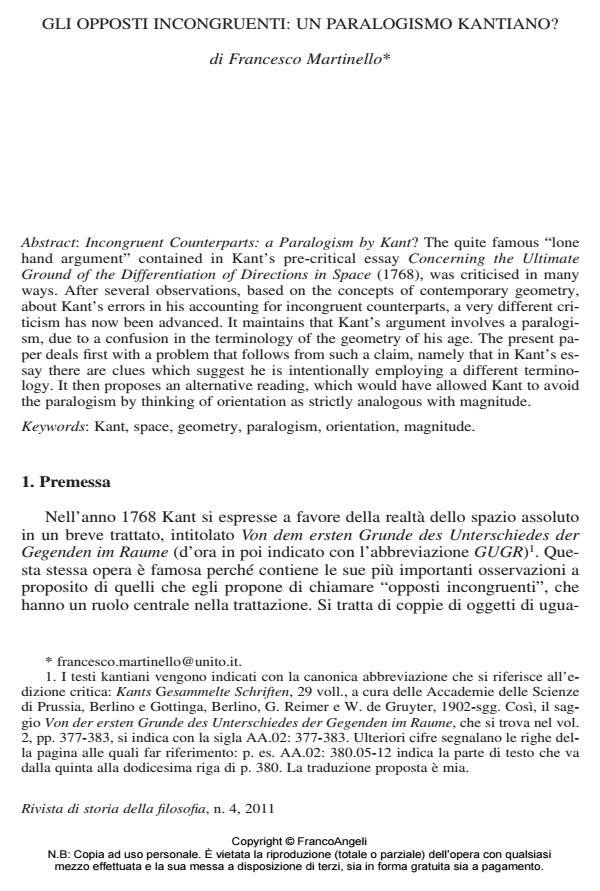Incongruent Counterparts: a Paralogism by Kant?
Journal title RIVISTA DI STORIA DELLA FILOSOFIA
Author/s Francesco Martinello
Publishing Year 2011 Issue 2011/4
Language Italian Pages 14 P. 679-692 File size 492 KB
DOI 10.3280/SF2011-004004
DOI is like a bar code for intellectual property: to have more infomation
click here
Below, you can see the article first page
If you want to buy this article in PDF format, you can do it, following the instructions to buy download credits

FrancoAngeli is member of Publishers International Linking Association, Inc (PILA), a not-for-profit association which run the CrossRef service enabling links to and from online scholarly content.
The quite famous "lone hand argument" contained in Kant’s pre-critical essay Concerning the Ultimate Ground of the Differentiation of Directions in Space (1768), was criticised in many ways. After several observations, based on the concepts of contemporary geometry, about Kant’s errors in his accounting for incongruent counterparts, a very different criticism has now been advanced. It maintains that Kant’s argument involves a paralogism, due to a confusion in the terminology of the geometry of his age. The present paper deals first with a problem that follows from such a claim, namely that in Kant’s essay there are clues which suggest he is intentionally employing a different terminology. It then proposes an alternative reading, which would have allowed Kant to avoid the paralogism by thinking of orientation as strictly analogous with magnitude.
Keywords: Kant, space, geometry, paralogism, orientation, magnitude
Francesco Martinello, Gli opposti incongruenti: un paralogismo kantiano? in "RIVISTA DI STORIA DELLA FILOSOFIA" 4/2011, pp 679-692, DOI: 10.3280/SF2011-004004